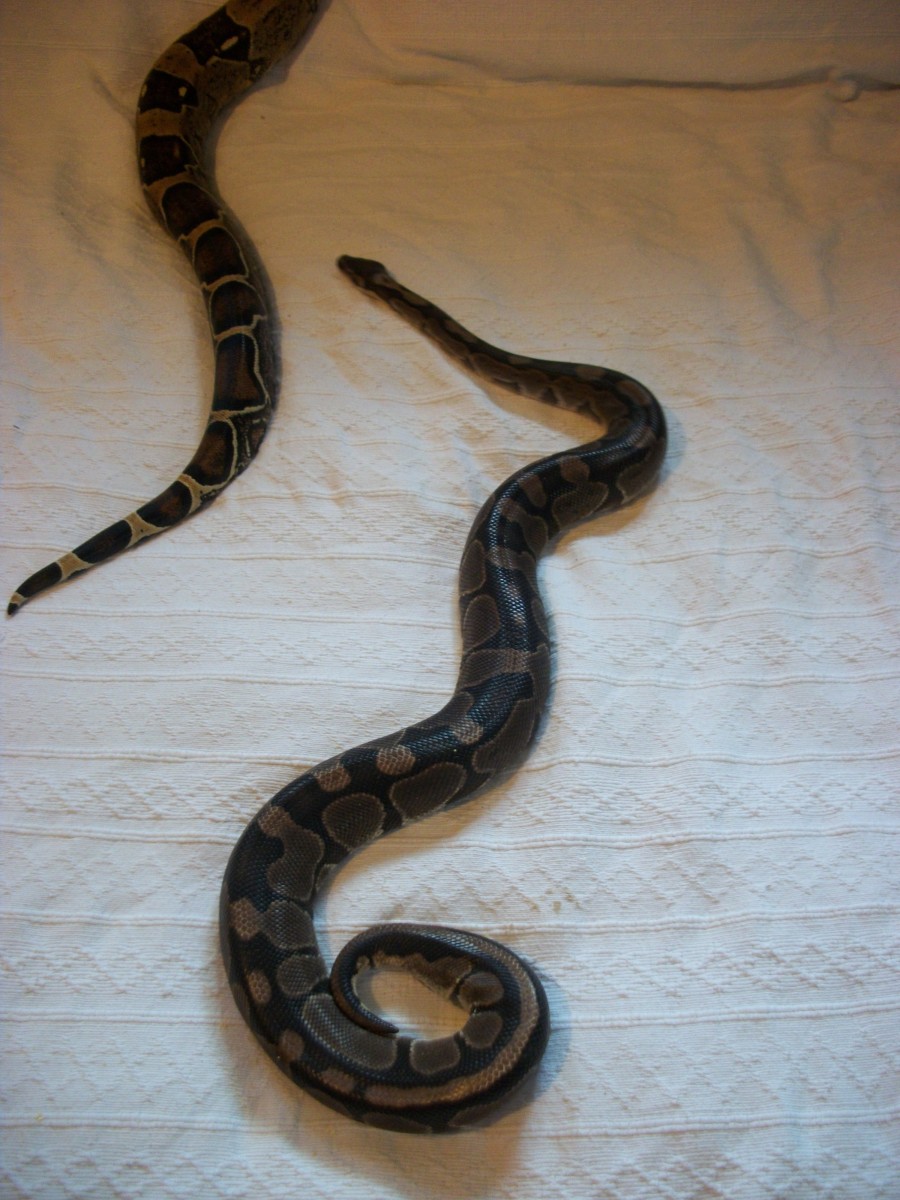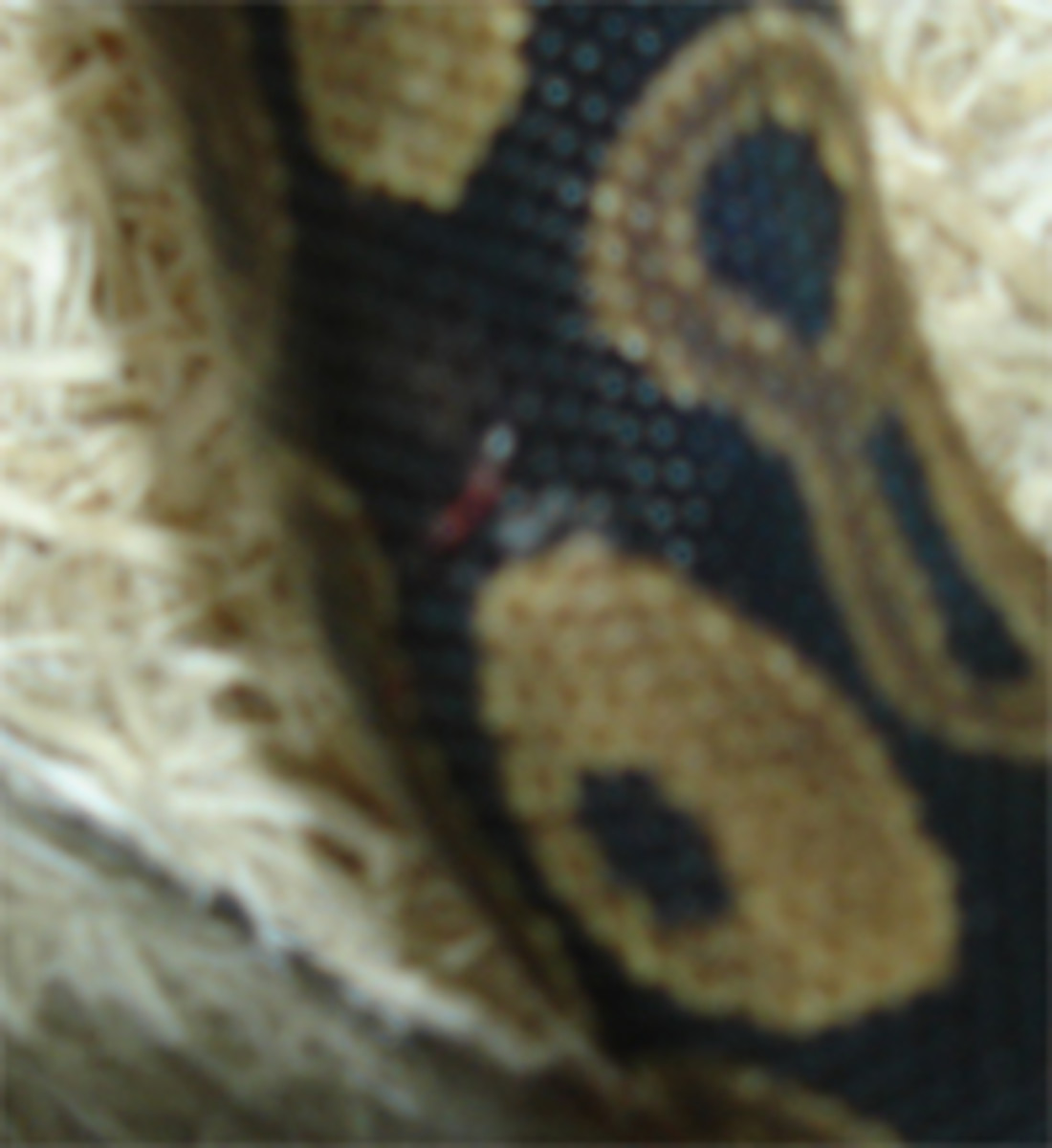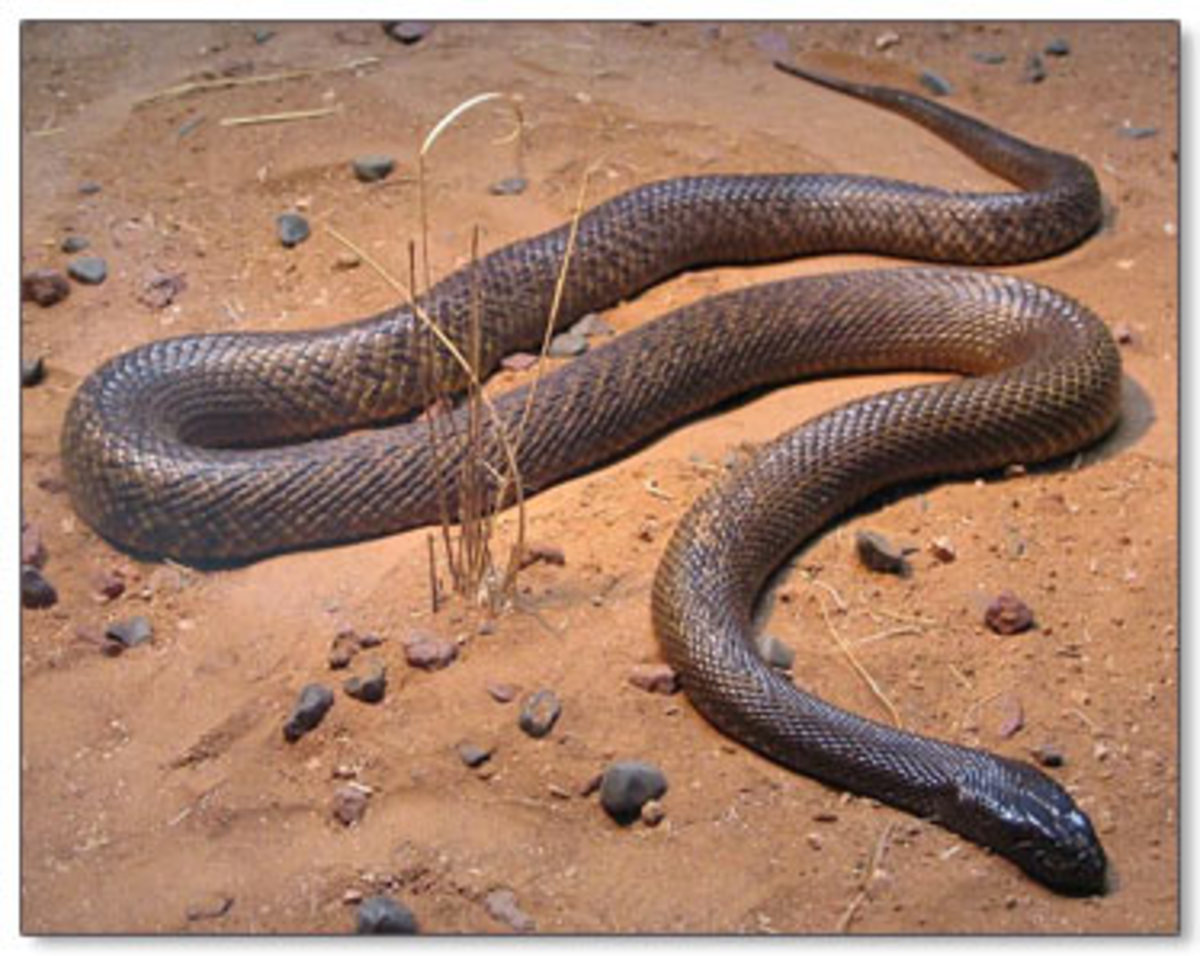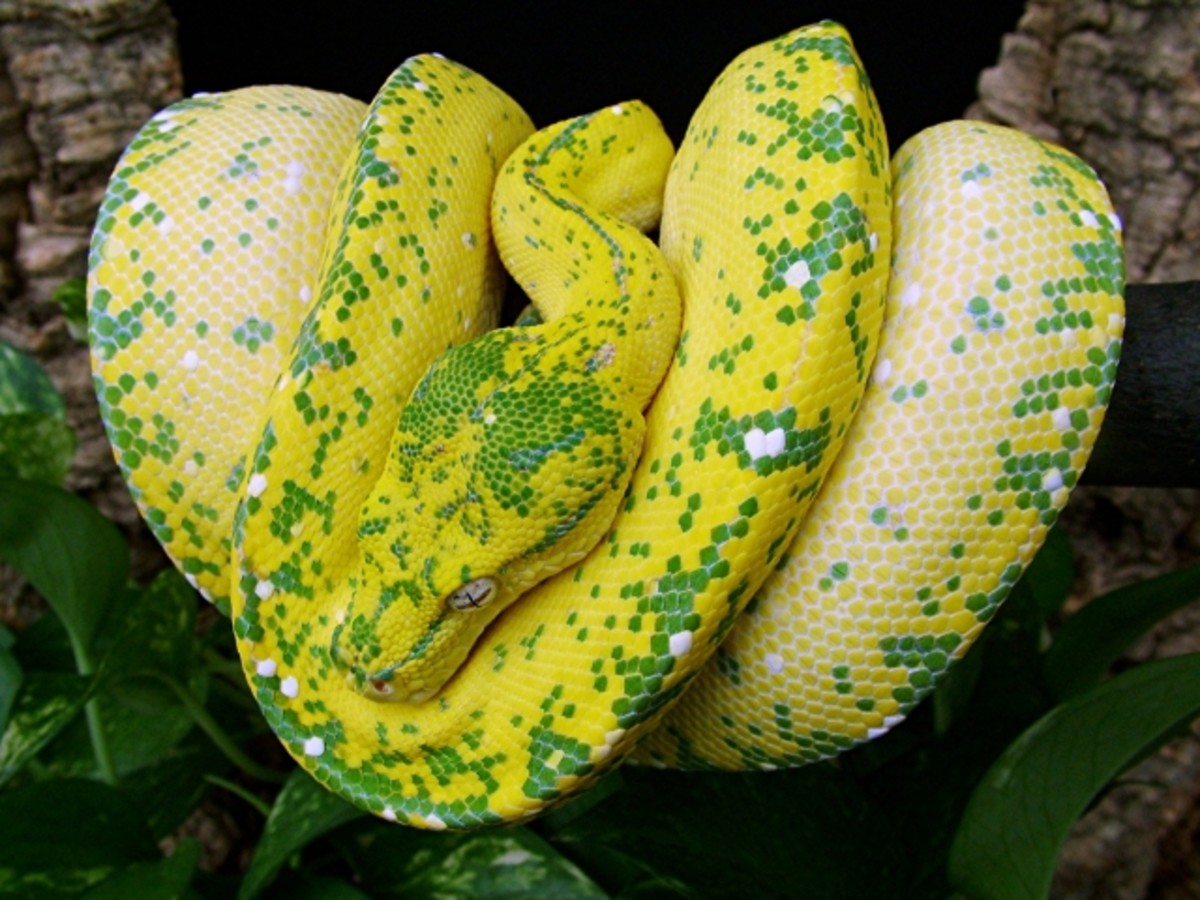How To Care For A Royal or Ball Python
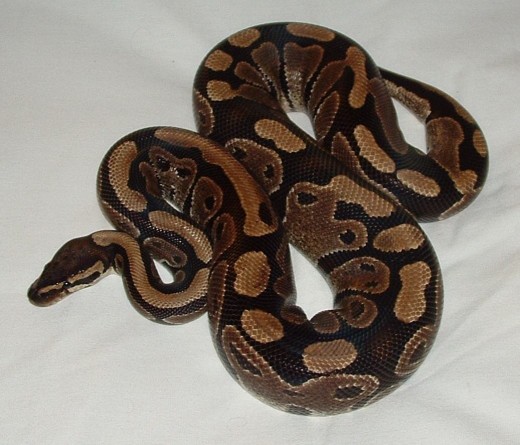
What Size Tank Is Best?
Most breeder's will tell you that Royal (also known as Ball python's tanks only actually need to be half the size of the snake - however, the snake IS going to get a lot larger and longer over time (most reach 5 foot in length - some even exceed 6 foot - though this is rare in captivity), so you need to consider although a bigger tank will mean more money being spent in one lump sun at the beginning, you won't need to change the tank later (which will save you money initially). Also, the bigger the tank, the more you're going to get from having the snake. Although snakes spend a lot of their time coiled up enjoying heat and light, you should consider that if the room is there to explore, your python will do so, and you'll get a lot more pleasure out of watching your python wander around it's tank.
Many people use 20 gallon tanks which have sliding doors, as these have quite a bit of floor space, but as said, this will depend on your budget - this is the smaller size tank as you have to take into account that if your Ball python reaches 20 years of age (and exceeds this), which is possible, you will need to have a tank that will be large enough to house what will potentially become a six foot snake. You should really have a look around reptile shops to see what cages and tanks they keep their pythons in, and enquire what the shop would recommend to you personally, as they can also advise you what to go for taking your budget into account. However, when asking advice from pet shops you should bear in mind that some care more about making profits on what they are selling than the health, welfare and over-all happiness of the actual animal. So do some research because you will find hundreds of different types of tanks which will offer different levels of ventilation and protection for your snake. My advice to you ultimately, will be to go for a tank with as much floor space as you can afford - a cramped snake WILL become bad tempered and may end up biting - and you certainly don't want a six foot snake to take up this as a habit.
Unusual White Morph
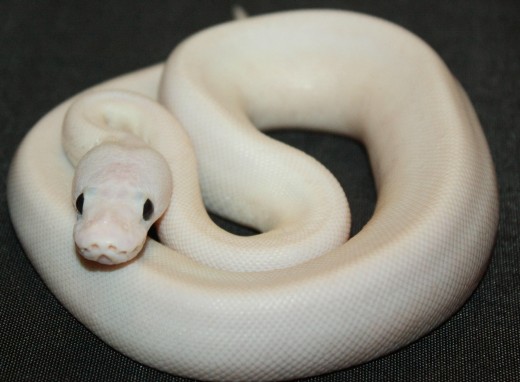
Choose A Tank That Will Last!
What Temperature Should I Keep The Tank At?
During the day, ball python's will require a "basking" spot in their tank, which should be heated at about 90 degrees Fahrenheit, the initial temperature of the tank should be around 83 to 85 degrees Fahrenheit, and the "cool" end should have a temperature of about 80 degrees Fahrenheit. During the night-time, the lamp which the python basks under should be turned off and you should allow the temperature to drop to about 75-80 degrees Fahrenheit.
Setting Up The Tank
Choosing how you want the tank to look is an exciting part of having any pet, but with snakes, as a rule you need to consider the danger of your snake becoming unwell through swallowing loose substrates such as wood chippings, sand or mulch. If this happens your snake will go off it's food, become constipated, and die if the substrate is not removed by a vet. To avoid your snake having to go through his, you should feed the snake it's mouse on a paper towel, or square of carpet so that it doesn't risk swallowing any substrate. You can remove the towel or carpet after feeding, so your tank floor still looks the way you had originally desired. But don't think that this is uncommon and won't happen - it is an extremely common problem in snakes, and it just isn't worth the risk.
You must provide this species of python with two hide-outs as it is in it's nature to hide, and a lack of a dark space will result in a stressed, nervous snake, which will result in health problems, not eating and a very unwell snake. When it is time to shed, pythons (like most snakes), will soak themselves in their water bowl, so you need to provide a large water bowl in which your python can soak if he/she feels the need to. This is also a great way for the snake to cool down if he/she wants, and essential as pythons drink a fair bit of water. You should, obviously, provide fresh water every day to prevent disease or mould growing - the temperature and water will make a brilliant growing place for bacteria and mould if the tank is not cleaned properly and food and water is not changed if left uneaten.
Contrary to belief, ball pythons actually do not require UV lighting, but they do require 12 solid hours of light and 12 hours of dark in order to stay happy. Changing this regular pattern will result in a very confused snake, and may also cause more hiding and stress. You can add fake plants and rocks to your tanks, which the snake will happily crawl around and over - plus it makes the tank appear more interesting for anyone looking in, and you can also provide logs (securely placed, obviously), which your snake may decide to climb.
If you decide to use a heat-pad to obtain the desired temperatures for your snake, you need to place it under half of the tank so that your python can choose a hot or cold spot, depending on how he/she is feeling.
Feeding Your Python
and lives in captivity for around 25 years. They are wonderful creatures, but will occasionally become uninterested in feeding: the most common reason for this is that the snake is suffering from stress.
The best diet for a Ball Python possible is a dead mouse or small rat, which should be provided every seven to ten days.The size of the rodent is actually determined by the diameter of the snake's body. You should never feed your Ball Python anything that is considerably larger than the diameter of the snake.
Most breeders and experts will advise to leave the mouse or rat in the python's vivarium and wait patiently. The snake may not express any interest at all for a few hours, depending on how hungry it is, but the rodent should be left in the same place so that the Python can pick up its scent. Pythons are usually reported to be shy eaters, as they are particularly vulnerable while consuming a meal and therefore, you should stand back from the tank so that the snake feels secure enough to begin its meal.
If your Python ignores the mouse, but is out in its tank, it may be that the mouse or rat smell is over-powering and, according to some breeder's, some snake's will only eat after the food has been rinsed a few times, with running water. Python's will occasionally choose to go for a few months without food, and this is perfectly normal (they can go for up to 6 months without feeding), although if there seems to be a severe, obvious or rapid change in the snake's weight, you may need to take the Python to a vet and seek professional advice.
Although some people choose to feed their snakes by hand, this is strongly advised against as snakes may get confused as to where the rat ends and the hands begin. It is also unnatural for the snake, confusing and unnecessary as snakes prefer to "discover" their prey and consume it at their own pace to avoid discomfort.
Snakes Love To Bathe
How To Feed Your Python Thawed Mice
Why Is My Python Rejecting Food?
Most Ball pythons are, in fact, very over-fed. Although feeding a snake once a week may seem extremely cruel to us, you have to consider that Ball Python's can go on surviving for around 6 months without any food at all. Feed should never be alive. Many breeder's and experts advise very strongly against it for many reasons: the animal will usually injure the snake; the snake will begin to reject the idea of dead food and the snake will learn to be more aggressive towards the owner as well as its prey. It is also illegal to feed live creatures to your pet snake.
Usually, Ball Pythons will automatically stop eating during the winter, and so if there is any change in temperature within its vivarium, the snake may decide to eat less and sleep more. This is natural, and is no cause for alarm.
If your Python begins to reject it's food more, it may be a sign that you are over-feeding and may want to reduce the amount you are feeding. Many people think of over-feeding their pets as kind and a way of appreciating the pet, however it is extremely cruel, especially if the pet eventually becomes obese, and will significantly reduce its life span (sometimes, in Python's by up to ten or more years). Snakes also require a lot of room to climb and explore, and if the vivarium is too small, the snake may become depressed or stressed (especially if it does not have a dark place where it can hide), and both of these conditions will cause an obvious change in diet.
Python Poll
Do You Have A Pet Snake?
Some More Rare Morphs
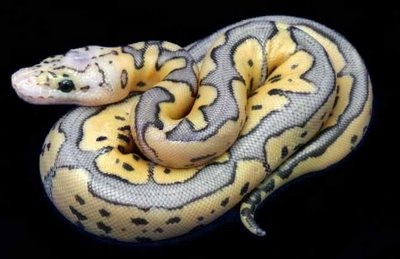

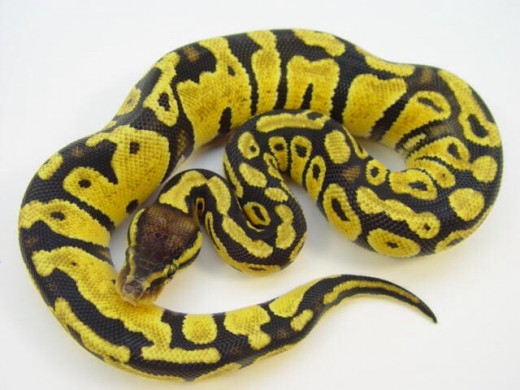
© 2014 Anna



